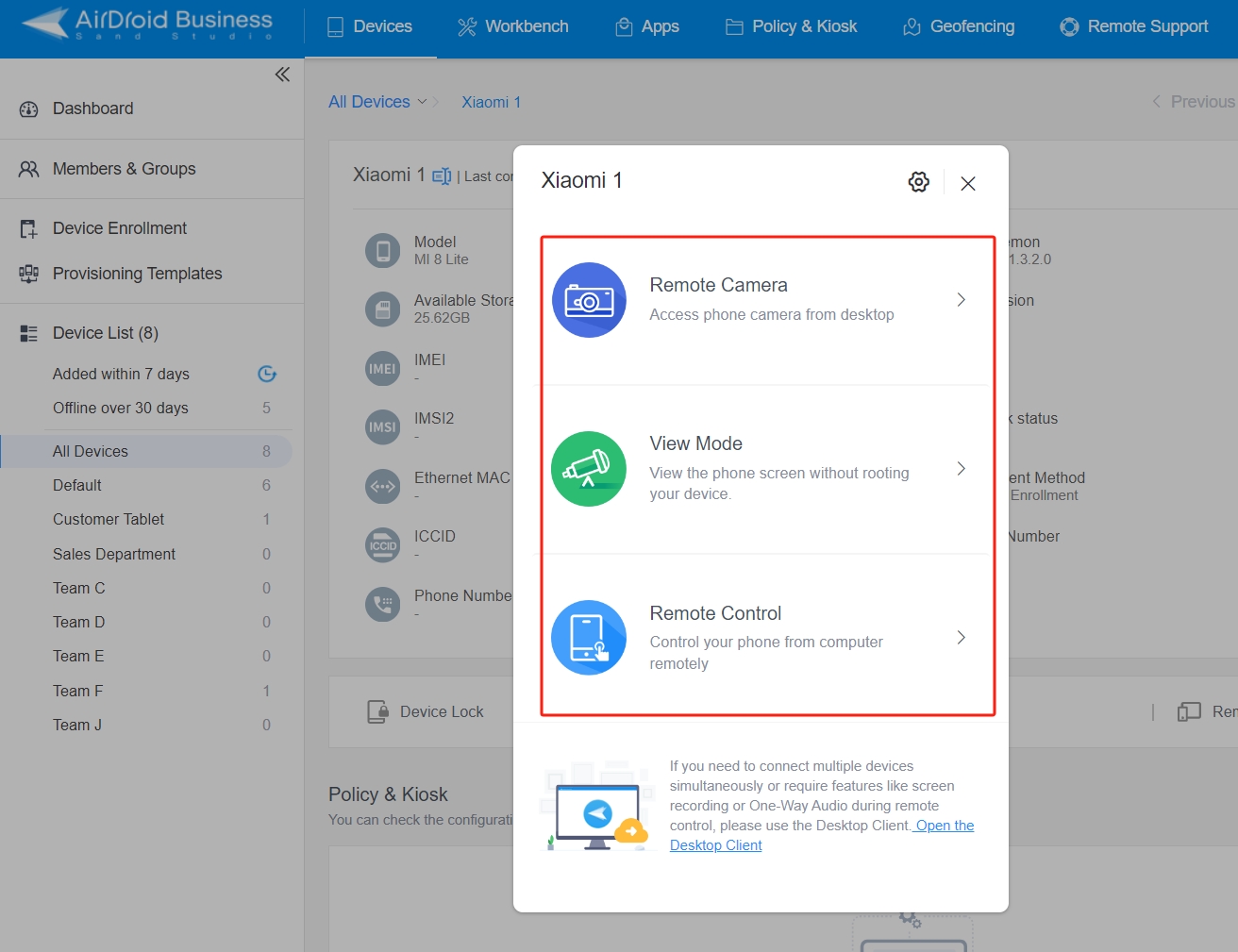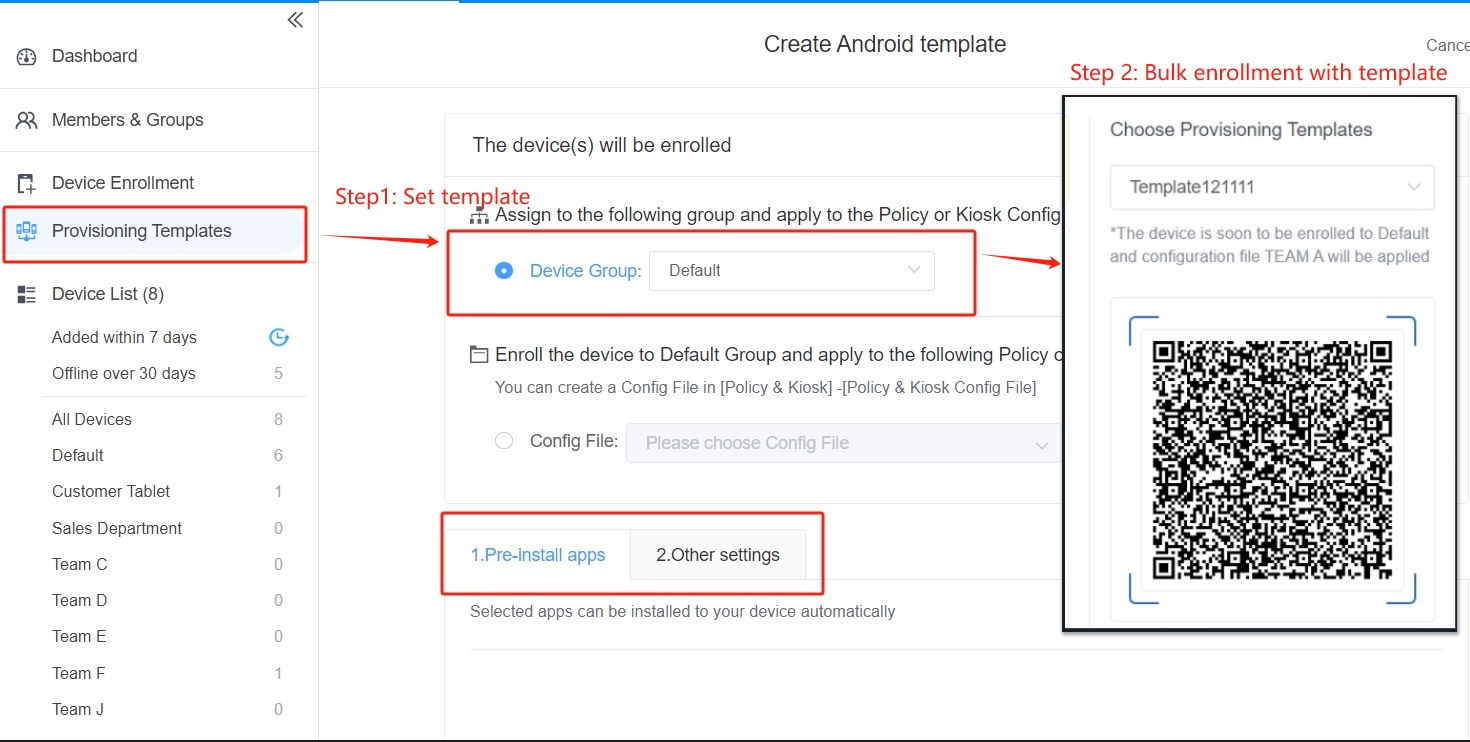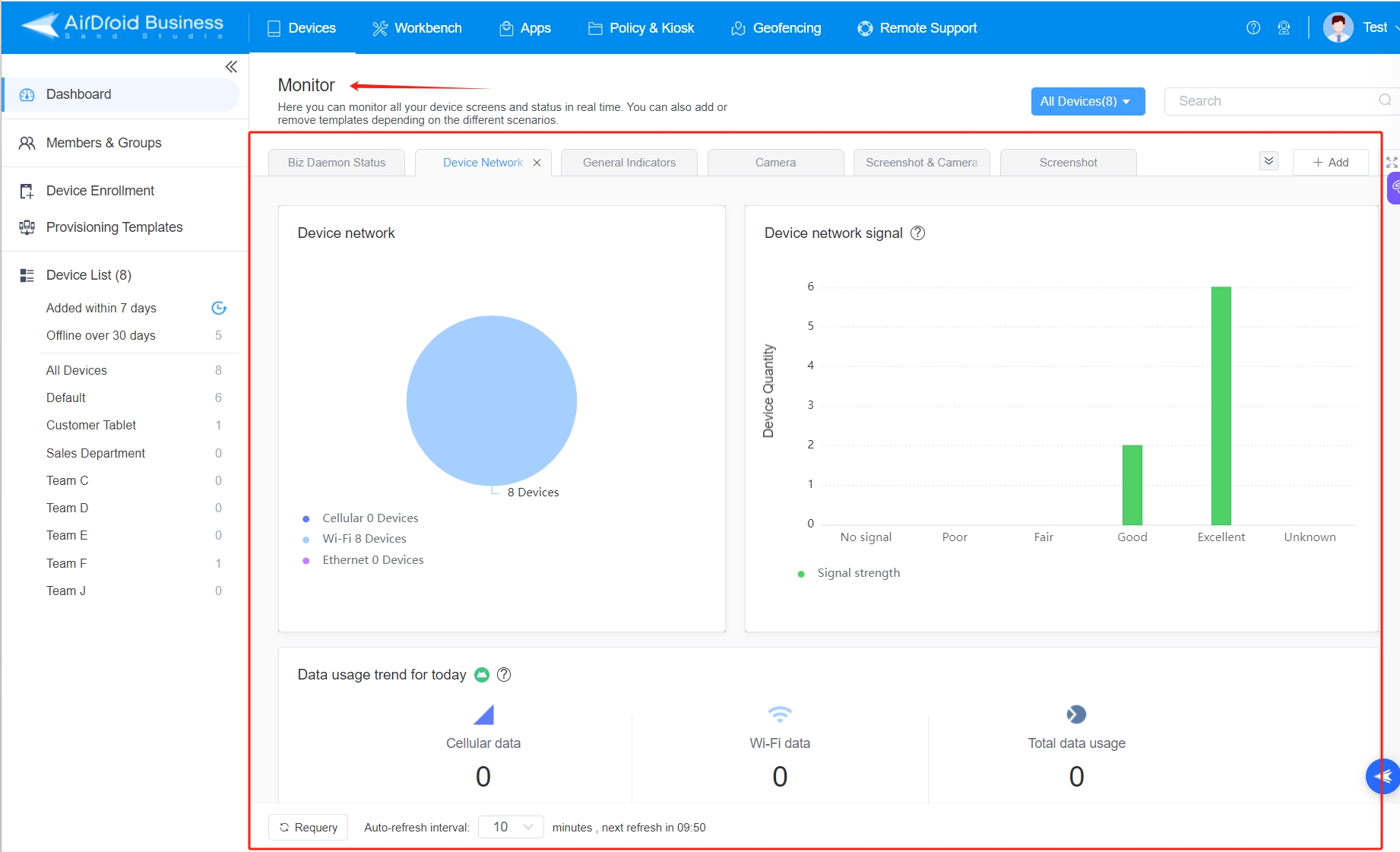Remote Device Management Services: The Beginner's Guide
- Part 1 :What are Remote Device Management Services?
- Part 2 :Challenges in Managing Distributed Remote Devices
- Part 3 :Key Features and Benefits of Remote Device Management
- Part 4 :How to Select the Right Remote Device Management Solution
- Part 5 :AirDroid Business: A Comprehensive Remote Device Management Platform
- Part 6 :Remote Device Management Services are for Every Business
Technology is the backbone of many organizations, and it’s not unusual for most businesses to have staff members using multiple devices in various locations. The challenge these businesses face is managing every device.
The answer is straightforward: remote device management services. Here’s a look at what they are and the challenges of not having them. We’ll follow that with a step-by-step guide on how to choose one and finish off by highlighting what AirDroid for Business can offer.

1What are Remote Device Management Services?
Remote device management services are solutions that allow IT teams to access every company device, regardless of its physical location.
The overriding benefit is that every device can be managed from one central location, making tech support troubleshooting, app management, file transfers, and bulk notifications easy.
2Challenges in Managing Distributed Remote Devices
For many businesses, managing remote devices can be a significant headache due to security concerns, device downtime, compliance issues, and wasteful overheads.
Data Breaches and Security Vulnerabilities
A primary challenge of managing remote devices is security. Data breaches and other security issues could arise if they’re unmanaged or left up to the end user to operate. The only secure way to manage them is to keep every device under the watchful eye of a business's IT team.
Productivity Losses From Device Downtime
Devices fail for any number of reasons. The time it takes to repair or replace them is paramount. If the device needs to be returned to the company’s head office or another location, the travel time can add to its downtime.
Compliance Failures and Legal Liabilities
Businesses with end-users utilizing their remote devices, such as EFTPOS kiosks, have compliance requirements that must be met. If a device becomes faulty, the downtime may lead to legal ramifications.
Wasteful IT Overhead and Operational Inefficiencies
Physically returning a device or having in-house IT travel to its location can be costly and time-consuming. These days, it’s inefficient to move people and devices to meet each other.
3Key Features and Benefits of Remote Device Management
Businesses that use remote control management software can counteract all the challenges mentioned above. Here are the standout benefits of remote device management.
- Centralized device visibility and control: View every device in the organization in real-time from one central location. Immediately identify and troubleshoot device faults.
- Secure remote access and data protection: Lock all devices so end-users can only access what they’re approved to. Only the company’s IT staff have full access to the device.
- Streamlined software deployment and updates: App management is seamless. Update apps on every device with one command.
- Proactive monitoring and remote troubleshooting: Devices can automatically notify the central server in real-time when there’s an issue. IT staff can view and access the device, troubleshoot, and solve the problem.
- Improved security and compliance: The device no longer needs to be taken to a third-party IT source; all security and compliance are kept in-house.
- Enhanced operational efficiency and productivity: If a device has a fault, productivity can remain high without the need for long periods of downtime.
- Reduced IT overhead and operational costs: As IT staff will no longer need to travel to the device’s location, IT overheads regarding travel expenses are significantly reduced.
- Consistent user experience and improved employee engagement: In-house management and immediate problem resolution, resulting in minimal downtime, improve employee engagement.
- Increased organizational agility and adaptability to change: Remote device management means that updates and notifications of changes can be rolled out instantaneously, ensuring that all device users are included.
4How to Select the Right Remote Device Management Solution
Choosing the best remote device management solution requires five steps. Here’s a breakdown of the logical way to decide.
- Step 1.Aligning the solution with your organization's specific requirements
- Some remote device management solutions offer a few features, and others are jam-packed. The ideal one has as many available as possible but can be selected, one feature at a time, so the solution meets the business's immediate requirements.
- Step 2.Evaluating vendor capabilities, security features, and deployment options
- The product suites’ vendor capabilities, strength of security, and ease of deployment are primary considerations. IT staff need to be able to utilize the features as soon as they switch the product on and be confident in its level of security.
- Step 3.Considering scalability, flexibility, and ease of integration
- As businesses grow, so should their tools. The right remote device management system must offer new features that the organization may require and allow for easy addition of additional devices.
- Step 4.Assessing pricing models and service-level agreements
- Pricing is a crucial decision when choosing a remote device management solution. Ensure that pricing isn’t merely a one-price-fits-all scenario. Look for one where you only pay for the features you use and the number of devices managed.
- Step 5.Conducting pilot tests and gathering user feedback
- Choose a product that allows you to test-drive it first to see if it meets your business requirements. Two weeks is plenty of time to get feedback from appropriate staff members before making the final decision.
5AirDroid Business: A Comprehensive Remote Device Management Platform
AirDroid for Business is a complete remote device management platform packed with features that can be added or removed as an organization’s needs change. Here are three primary benefits:
- Secure Remote Access and Control
- The business's IT department can securely access every device from one location. This feature also allows devices to be locked to the end user so they can only use what’s been approved. Only authorized team members will have full access, so security is tight.

- Automated Device Management and Deployment.
- Device apps require continual maintenance and upgrades. It’s time-consuming to attempt these manually on each device. Automated management means the IT team can deploy updates to every device at the same time.

- Centralized Reporting and Analytics
- Take advantage of AirDroid’s robust reporting feature to monitor every device. Reports can be filtered daily, weekly, or monthly and highlight statistics such as app use, data consumption, and traffic trends. Geofencing allows for location tracking to ensure devices aren’t being removed from predetermined areas.

6Remote Device Management Services are for Every Business
Any business using devices that aren’t using a remote device management service is costing itself time and money due to downtime of the devices and app management. Managing all of this from one central location ensures tighter security, less wastage, and better controls.





Leave a Reply.